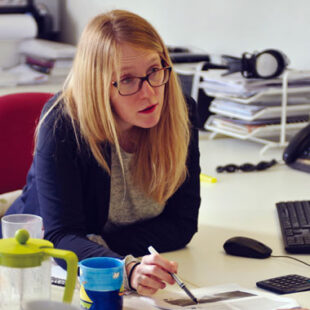The value of strong case studies
The media thrives on stories with a strong human interest angle. Often it is not enough to talk about a service, or to highlight facts and figures – journalists want to know about real situations and the emotional context, in order to demonstrate meaningful impact. Case studies also bring your website, marketing materials and events to life, so shouldn’t be thought of only in terms of generating media coverage.
Informed consent
When approaching potential case studies it is vital to follow a process of ‘informed consent’. This means that the case study fully understands the role they will play and the ways in which their story may be used before providing written approval via a consent form. Make sure your process complies with GDPR regulations – provide your Privacy Policy and only hold information about case study subjects for as long as is necessary.
How to gather informed consent
- Before you start interviewing the individual, talk about what you’re trying to achieve and how they can help by sharing their experiences with you.
- Reassure them that none of their contact details would be shared with a journalist or anyone else without their consent.
- Check whether the individual is comfortable to use his or her real name, or if they’d prefer a pseudonym (if they opt for the latter, consider the impact this will have on filming or photography opportunities).
- Ask them about which types of media they would be happy to be featured in, and explore the possible impacts of this with them – having an ex-partner or a family member see their story in the press, for example.
- Make sure they are happy and that you really understand their story. Get their written approval on the notes you prepare and a consent form, to confirm what’s been agreed.
Interview questions
It’s important to prepare the questions you want to ask before the interview starts, thinking about:
- The key messages you are trying to communicate.
- The kind of questions, and story, your target audiences will be interested in.
- How you will approach any sensitive questions or issues.
In terms of the basic information demanded by journalists up front, you’ll need:
- Name or pseudonym
- Age
- Location (which town or city they live nearest to and what their local paper is, to help inform media planning)
- Former and current occupations
- Children? How many and how old?
You’ll also need to ask:
- Which sections of the media are they happy to speak to?
- Are they happy to be photographed?
- When is the best time to contact them, and how much notice would they need for an interview opportunity?
Other than that, keep questions open to encourage the case study to talk in their own way about their story.
Make sure you give them the opportunity to ask you any questions they have and leave them your contact details in case they want to discuss things at a later date.
Creating an easy-to-use library
Style and format
- Write up the case study information using the style of your target media and in a way that will engage your audiences.
- Include some notes on how the individual comes across, how confident they are, any sensitivities or issues, and any support they may need, for internal purposes.
- Keep it short, but detailed – a few paragraphs will usually suffice.
- Weave in quotes throughout the case study to add authenticity and bring the story to life.
Photography
- Get a copy of any high quality photos the case study is willing to share with you (if they don’t have any, check whether they’d be happy to be photographed for the media).
- Save pictures as captioned jpeg files, less than 1MB in size and 600 pixels wide so they can be easily emailed, and keep a high resolution version on file suitable for print reproduction.




